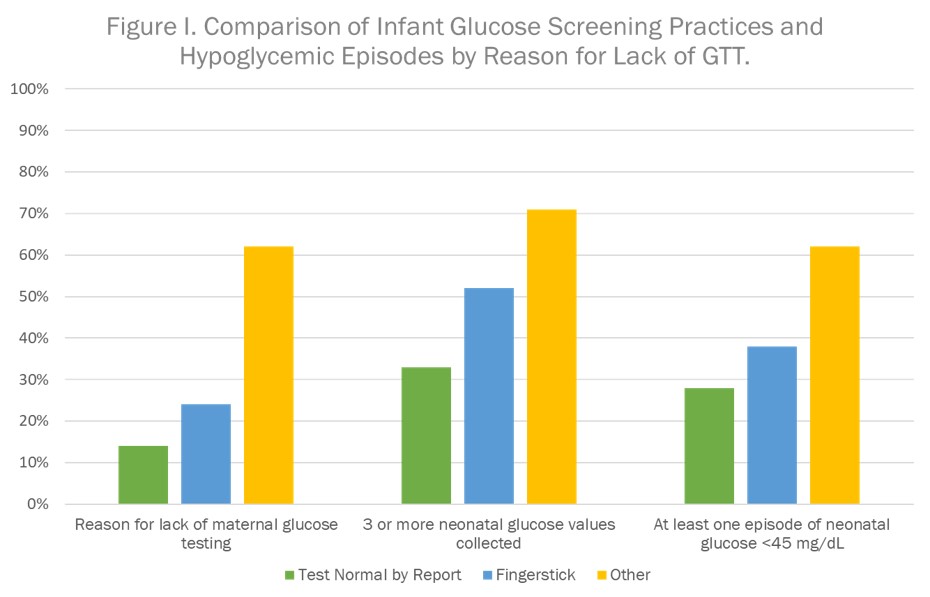Newborn Care
Session: Newborn Care
220 - Neonatal Hypoglycemia Screening Practices in Infants Born to Mothers Without Glucose Tolerance Testing at a Single Center
Friday, May 3, 2024
5:15 PM - 7:15 PM ET
Poster Number: 220
Publication Number: 220.191
Publication Number: 220.191

Jenna L. Scholl, MD (she/her/hers)
Pediatric Resident
San Antonio Uniformed Services Health Education Consortium
San Antonio, Texas, United States
Presenting Author(s)
Background: Infants born to mothers with gestational diabetes mellitus (GDM) are at risk for neonatal hypoglycemia (NH) and should receive appropriate screening. GDM is diagnosed by glucose tolerance testing (GTT). There is little data regarding screening practices for NH among infants born to mothers who did not undergo adequate GTT.
Objective: This single-site retrospective descriptive study examined infant blood glucose screening practices for infants born to mothers without documented adequate GTT from 2014 to 2021 at Brooke Army Medical Center.
Design/Methods: After IRB approval was obtained, data for all couplets with no GTT documented was extracted from the electronic medical record. Mothers with pregestational diabetes and those who delivered prior to 35 weeks were excluded. Maternal and infant demographic data, reason for lack of GTT, and infant screening practices were analyzed. Chi square analysis and Fisher’s exact test were used to assess relationships between categorical variables.
Results: Of 13,338 deliveries, 0.98% (131) mothers did not undergo adequate screening for GDM, Table 1. Reasons for no GTT included reported normal testing with no documentation (14%, 18/131), 2 weeks of fingerstick testing (24%, 32/131), and other (62%, 81/131), Figure 1. We analyzed screening practices for infants born to mothers without adequate GDM screening and no other infant-related reason for NH screening (small or large for gestational age, late preterm infant, or NICU admission). Seventy-eight percent of infants (102/131) had no other reason for NH screening. Sixty-eight percent of these patients (69/102) were screened with at least 1 point of care (POC) blood glucose level and 62% (63/102) of these patients were screened with at least 3 POC glucose levels. Among infants born to mothers with reported normal testing but no documentation, 33% (5/15) received screening with at least 3 POC blood glucose levels versus 67% (58/87) of infants born to mothers with some other reason for no GTT (p=0.014). Thirty-five percent of patients (46/102) experienced at least 1 episode of hypoglycemia, or blood glucose measurement less than 45 mg/dL. Among infants with no other reason for NH screening, 31% (32/102) experienced at least 1 episode of hypoglycemia.
Conclusion(s): Less than 1% of mothers who delivered at a single military treatment facility did not undergo GTT. Most of the infants born to these mothers were screened for NH with at least 3 POC blood glucose measurements. Among infants born to these mothers, those whose mothers had reportedly normal GTT screening with no documentation were less likely to be screened for NH.
.jpg)

